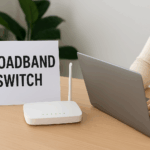In the UK, individuals likely have come across ISAs, also known as individual savings accounts. But what are they and why are they important? In this guide, we will cover the rest of cash ISAs, stocks & shares ISAs, junior ISAs, lifetime ISAs, and others. After going through this guide, you will understand how to maximize your ISA savings account and not lose your tax-free contribution.
Understanding What an ISA Is
In simpler terms, an ISA is an account that provides tax-free savings or investments for residents in the UK. It serves as a protective wrapper for your cash shielding it from taxes on the interest earned, dividends, or capital gained. Every tax year, you get an ISA allowance, which is the total amount you are allowed to contribute. Currently in the fiscal year of 2023-2024, it is 20,000 pounds. Remember to use your allowance before April 5th otherwise, you will lose it.
Types of ISAs Explained
Here’s a concise explanation of the most popular and common ISAs:
Cash ISA
A cash ISA is a type of savings account that is one hundred percent tax-free and fit for less aggressive investors. Key features include:
- Tax-free interest: All the money earned in your cash ISA account is tax-free, unlike standard savings accounts.
- Flexibility: Options include easy access ISAs, fixed ISAs (higher interest for locking away your funds), and notice cash ISAs (withdrawals after 30 to 90 days).
A cash ISA helps avoid paying tax on your savings if you are a higher rate or additional rate taxpayer, especially during periods of rising interest rates.
Stocks & Shares ISA
A Stocks and Shares ISA allows you to invest in shares, funds, and bonds without being taxed. These are a few of the benefits:
- Tax-free growth: You don’t pay capital gains tax or dividend tax on your investment.
- Long-term growth potential: Historically, the stock market has returned around 7 to 8 percent annually after inflation.
As an example, if you had invested £5,000 in a global index fund a decade back, your investment would have grown tremendously over the years—all tax-free.
Lifetime ISA (LISA)
A LIFETIME ISA account is designed for:
- Retirement savings. Buying your first home.
- The property cost had to be less than £450,000.
Key features:
- Government Bonus: The government adds a bonus of 25 percent (£1,000) for every £4,000 you save.
- Drawbacks: 25 percent penalty for early withdrawals before age 60 or first home purchase.
Although using a lifetime ISA to increase your savings is great, the property price cap and penalty fees leave something to be desired.
Junior ISA
Similar to an ISA, a junior ISA is an account that can be dedicated to savings or investments and will be tax-exempt for children under the age of 16. Some of the key parts of a Junior ISA include:
- Annual allowance: 9,000 GBP (this amount is also separate from the adult ISA limit of 20,000 GBP).
- Control: The parents can manage the account until the child turns 16 but they have to wait until they turn 18 to make a withdrawal.
- Long-term benefits: A clear way of setting aside some money for your child’s future.
Why open an ISA account?
If you are still unsure, these reasons might change your mind:
- The growth is tax-free; you get to keep every single penny of your interest, dividends, and capital gains.
- Using an ISA account allows you to divide your tax-free limit of 20,000 GBP into multiple accounts.
- Having tax-free expenses allows you to increase your total savings when the time comes. So as time passes, you’ll be able to reap the rewards.
- Having leftover allowances doesn’t get carried on to the next year, which means every single contribution added each year is essential.
Choosing the right ISA tailored to your needs shouldn’t be complicated:
- Cash ISA: This is the most favorable option for those looking to save in the short term or have low risk.
- Stocks & Shares ISA: Perfect for those willing to make a long-term investment for an increase in total value.
- Lifetime ISA: This is perfect for retirement savings or if you’re a first-time homebuyer (and the property is under 450,000 GBP).
- Junior ISA: Ideal for setting up an investment portfolio for your child.
Important Dates
- April 5th: Mark this date as the last day to utilize your current year’s ISA funds.
- April 6th: A new tax year commences, providing you with an additional annual limit of £20,000.
For a detailed breakdown of this year’s top investment platforms, read our Best Stocks & Shares ISAs in 2025 – Top Platforms Compared, Cash ISAs Overview and The Best Accounts and Rates and Lifetime ISA (LISA): Buy Your First Home or for Retirement– we analyze fees, investment options, and exclusive features to help you choose the perfect tax-efficient account for your portfolio.








